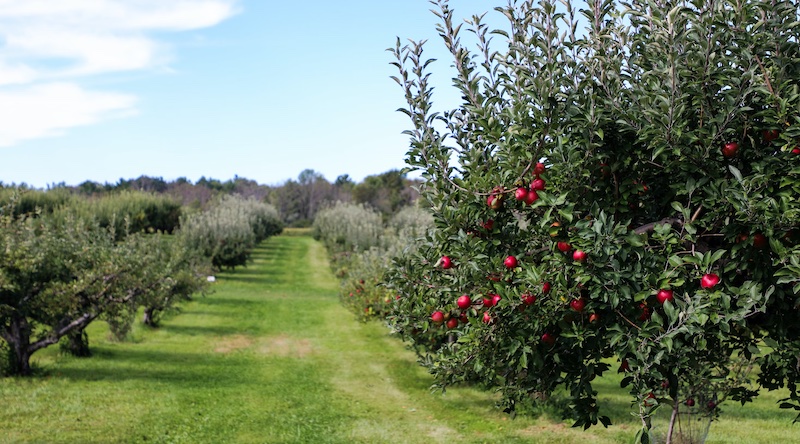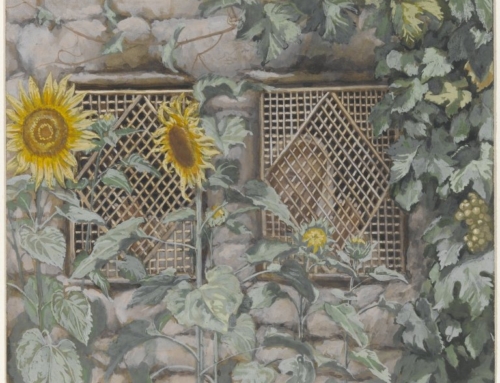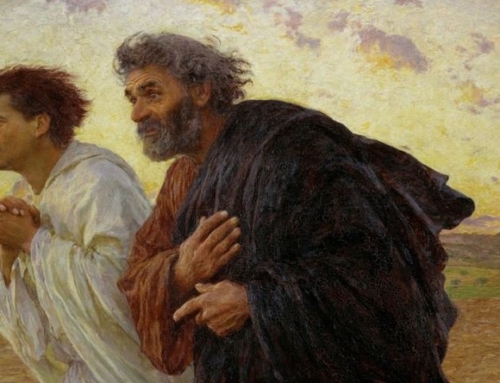2023 Summer Reading Recommendations:
Noah’s Moral Ark by Hugh of St. Victor
Mystics love images. They use images to elucidate the work of God in the soul. For example, St. Teresa of Avila famously wrote of seven mansions that mark the Christian’s progress in prayer, while St. Thérèse, with flowers and teacups and thimbles, exposited the mysteries of predilection and grace. The works of these mystics provide for delightful reading and memorable, penetrating insights into the life of grace. Through such images, they unite varied elements of the spiritual life into comprehensive portraits, enabling readers to see how all God’s gifts fit together.
Within this long tradition, the medieval canon Hugh of St. Victor holds a prominent place. Little known today, Hugh of St. Victor was a giant of medieval theology and spirituality (he did not consider these especially distinct). Confident that “our mind learns from its own nature that the visible has a relation and a likeness to the invisible,” (Commentary on the Celestial Hierarchy of Pseudo-Dionysius) his writings provide vibrant images to concretize the spiritual life. Noah’s Moral Ark provides an excellent introduction to the work of Hugh of St. Victor. The work originated as a series of chapter talks (spiritual conferences given to a religious community) addressed to his fellow canons in the Parisian Abbey of St. Victor.
In Noah’s Moral Ark, Hugh uses Genesis’s description of Noah’s Ark as a springboard to discuss the workings of grace. In the third of four sections of the book, he moves on from the ark to use the growth of a tree to outline the progress of the wisdom of God (which—or, rather, who—is also the Word of God) within the soul. He writes:
In the hearts of the saints, as in an unseen paradise, the wisdom of God
is sown in fear,
watered by grace,
dies through grief,
takes root by faith,
buds up by devotion,
shoots up through compunction,
grows by longing,
is strengthened by charity,
grows green by hope
puts out its leaves and spreads its branches through caution,
flowers through discipline,
bears fruit through virtue,
ripens through patience,
is harvested by death,
and feeds by contemplation.
Step by step, Hugh attentively exposits each of these stages of growth. Looking at the first two of these stages can show Hugh’s thought process. The “fear of the Lord is the beginning of wisdom” (Prov 9:10), because in considering God’s punishment of evil and in fearing that one may waste his life pursuing transitory goods, a person becomes poor in spirit. This “destroys all the pleasure of earthly desire” and “shows us what a humble view we ought to take of our own selves.” Wisdom cannot grow in one who fundamentally places his hope for happiness in earthly things, but fear delivers him from the illusion of worldly fulfillment. With this conversion, we begin to grow in wisdom.
Seeds are rather fragile, however, and fear alone does not make a green shoot spring up. At the beginning of the spiritual life, God often gives us the moisture that waters the seed and makes it germinate. He gives grace, particularly, the grace of consolation. Hugh writes that God gives the mind a palpable foretaste of spiritual joy, “lest, if it be left wholly a stranger to pleasure, it should, like a dry seed without moisture, be unable to develop the shoot of wisdom.” Watered by grace, wisdom will soon manifest its first green shoot as the promising beginning of the great tree God seeks to grow.
As Noah’s Moral Ark continues, Hugh proceeds to exposit the growth of wisdom in the soul with beautiful writing and psychological perspicacity. His treatment of wisdom weaves many biblical passages and spiritual concepts together into one beautiful tapestry, and it can provide readers with much fodder for meditation. In the Church’s array of mystics, Hugh of St. Victor deserves to be better known. Noah’s Moral Ark provides a great gateway into his thought, and, as a bonus, it is blessedly concise—the work runs about 100 pages. Few teach such sublime truths with as much beauty and brevity as Hugh of St. Victor. His images are second to none, so surely the tree of wisdom merits a place among the mansions in the landscape of mysticism.
✠
Photo by Michael & Diane Weidner on Unsplash







